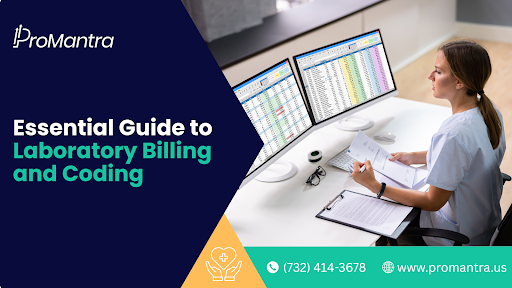Coding pelvic pain is like navigating a maze. One wrong turn, and you might find yourself lost in a tangle of incorrect codes, denied claims, and frustrated patients. Did you know that errors in medical coding can lead to a staggering amount of lost revenue? In 2023, coding mistakes accounted for billions in lost revenue across the healthcare industry. Pelvic pain, with its multifaceted causes and presentations, is particularly prone to coding errors. But don’t worry; with the right strategies, you can avoid these common pitfalls and ensure accurate, efficient coding every time.
Understanding the Complexity of Pelvic Pain Coding
Pelvic pain can be acute or chronic, gynecological or non-gynecological, and can stem from a variety of causes. It’s a broad term that encompasses a range of conditions. This complexity makes coding for pelvic pain particularly challenging. The ICD-10 code R10.2, for instance, is commonly used for pelvic and perineal pain, but is it always the right choice? The answer is, not necessarily.
Choosing the correct code requires a deep understanding of the patient’s symptoms, diagnosis, and the underlying cause of the pain. Missteps often occur when coders rely too heavily on generic codes without considering the specifics of the case. Let’s dive into some of the most common pitfalls in coding pelvic pain and how to avoid them.
Pitfall 1: Overusing General Codes
It’s tempting to use a catch-all code like R10.2 when faced with pelvic pain. After all, it seems to cover the bases, right? Unfortunately, this approach can lead to inaccuracies. R10.2 is a general code that doesn’t provide specific information about the underlying cause of the pain. Overuse of this code can result in claim denials or the need for additional documentation, slowing down the revenue cycle.
How to Avoid It: To avoid this pitfall, always dig deeper into the patient’s medical records. Determine the exact cause of the pelvic pain. Is it related to endometriosis, PID (pelvic inflammatory disease), or a urinary tract infection? Each of these conditions has a more specific ICD-10 code that should be used instead of R10.2. For example, N80.1 is used for endometriosis of the ovary, and N73.9 for unspecified inflammatory disease of the female pelvic organs. Using specific codes improves accuracy and reduces the risk of claim denials.
Pitfall 2: Ignoring Laterality
Laterality refers to the side of the body affected by the condition, such as the left or right side. Many pelvic pain conditions can affect one side more than the other. Ignoring this aspect when coding can lead to inaccurate billing and reimbursement issues.
How to Avoid It: When coding for conditions that involve laterality, always specify the side of the body that’s affected. For example, if coding for an ovarian cyst, use the appropriate codes to indicate whether the cyst is on the left (N83.202) or right (N83.201) ovary. If laterality is not documented, it’s important to query the physician for clarification.
Pitfall 3: Overlooking Chronic vs. Acute Distinctions
Pelvic pain can be either acute (sudden and severe) or chronic (long-lasting). The distinction between these two types is crucial for accurate coding. Chronic pelvic pain, for example, may involve a different set of codes than acute pain, reflecting the ongoing nature of the condition.
How to Avoid It: Ensure that the medical documentation clearly states whether the pelvic pain is acute or chronic. Use appropriate ICD-10 codes that reflect this distinction. For instance, chronic pelvic pain might be coded as G89.29 (Other chronic pain), while acute pelvic pain might fall under R10.2. It’s also beneficial to consider additional codes that might provide further clarity, such as codes indicating the underlying cause of the pain.
Pitfall 4: Missing Related Conditions
Pelvic pain is often accompanied by other symptoms or conditions. These related conditions can provide essential context and should be included in the coding. Missing out on coding these related conditions can result in incomplete claims that don’t accurately reflect the patient’s medical situation.
How to Avoid It: Review the patient’s medical records comprehensively. Look for any related symptoms or conditions that might also need coding. For instance, if a patient is experiencing pelvic pain due to a urinary tract infection, ensure that you also code for the UTI (N39.0). Including all relevant codes gives a more complete picture of the patient’s health and ensures appropriate reimbursement.
Pitfall 5: Failing to Query for Clarification
One of the most common pitfalls in medical coding is failing to ask questions when something is unclear. Whether it’s a vague note from the physician or an ambiguous diagnosis, unclear documentation can lead to coding errors.
How to Avoid It: Don’t hesitate to query the physician when documentation is unclear. It’s better to ask for clarification than to make assumptions. A well-structured query can help you obtain the specific information you need to code accurately. For example, if the documentation simply states “pelvic pain” without any indication of cause, laterality, or chronicity, a query can help clarify these details, leading to more accurate coding.
Pitfall 6: Neglecting to Update Codes
ICD-10 codes are updated annually, with new codes added, old codes revised, and some codes deleted. Failing to keep up with these updates can lead to the use of outdated codes, resulting in claim denials or delays.
How to Avoid It: Make it a priority to stay current with ICD-10 updates. Regularly review the latest code changes and ensure that your coding practices align with the most recent guidelines. Consider attending coding seminars, subscribing to coding newsletters, or using coding software that includes automatic updates.
Pitfall 7: Overlooking Procedure Codes
Sometimes, pelvic pain isn’t just about diagnosis—it’s also about the procedures performed to diagnose or treat the condition. Overlooking procedure codes can result in incomplete claims and lost revenue.
How to Avoid It: Always check whether any procedures were performed that need to be coded. For example, if the patient underwent a pelvic ultrasound, ensure that the procedure code for the ultrasound (such as 76856 for a complete pelvic ultrasound) is included in the claim. This ensures that all aspects of the patient’s care are accurately represented in the coding.
Pitfall 8: Failing to Address Medical Necessity
Insurance companies are increasingly scrutinizing claims for medical necessity. If the coding doesn’t adequately reflect the medical necessity of a test or procedure, the claim may be denied.
How to Avoid It: When coding, ensure that the documentation clearly supports the medical necessity of the diagnosis and any related procedures. This means linking the correct diagnosis codes with the procedure codes to demonstrate why the procedure was necessary. For instance, if a pelvic ultrasound is performed due to chronic pelvic pain, the chronic pain code should be clearly linked to the ultrasound code.
Pitfall 9: Inadequate Training and Education
Medical coding is a complex and ever-evolving field. Coders who aren’t adequately trained or who don’t pursue ongoing education are more likely to make errors, particularly in complex areas like pelvic pain coding.
How to Avoid It: Invest in ongoing training and education for yourself and your coding team. Regularly attend workshops, webinars, and other educational events that focus on the latest coding practices and updates. Staying informed is key to avoiding common coding pitfalls and ensuring accuracy.
Conclusion: Mastering the Art of Pelvic Pain Coding
Coding for pelvic pain may be challenging, but with the right approach, you can avoid common pitfalls and ensure accurate, efficient coding. Remember, specificity is your best friend. Always strive for the most accurate, detailed codes that reflect the patient’s condition. Keep up with coding updates, never hesitate to ask for clarification, and continuously seek out educational opportunities. By doing so, you’ll not only improve the accuracy of your coding but also contribute to a smoother revenue cycle and better patient outcomes.
At ProMantra, we understand the complexities of medical coding and the challenges coders face daily. Our team of experienced professionals is here to help you navigate the coding landscape with confidence. Whether you need assistance with coding, training, or staying up to date with the latest coding changes, we’re here to support you every step of the way. Let us help you avoid common pitfalls and ensure that your coding is always on point. Reach out to us today to learn more about how we can assist you.




